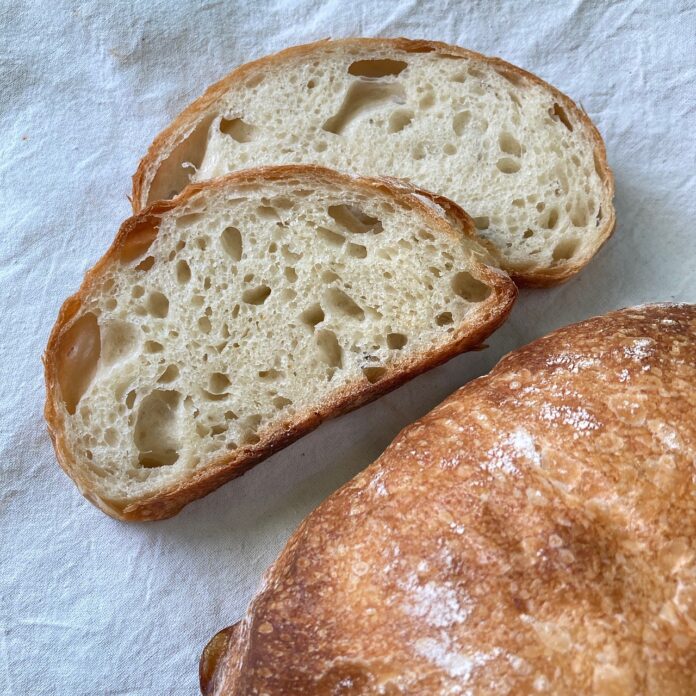Hello, dear sleepy readers!
This posts is a very different from our typical posts about wellness, but we think it is just as important nevertheless. It is also the culmination of numerous trials and experiments over many months following some of the ‘top ranked’ websites talking about sourdough bread, starter, fermentation, you name it.
First of all, we assume that you are already familiar with the basics of what is normally called sourdough, and will therefore not delve into the history behind it. What this post will do, as the title suggest, is to (hopefully) make your life a little easier when you are just starting out in the world of sourdough baking.
Feel free to check out this post if you are just starting out in the world of sourdough baking.
Myth # 1

Myth: A new sourdough starter will take between 5 and 7 days of feeding to be ready for use.
Truth: We don’t know where this time frame came from, and it may be true if we are talking about an already established i.e. mature sourdough even if it hasn’t been fed for quite some time. You will likely need a minimum of two weeks of constant feeding – a minimum of once per day – before your sourdough starter is ready for use.
It’s also quite possible that you will need a month or two of constant feeding before your starter matures. By mature, we mean that your sourdough starter will double in size within 4 to 6 hours of feeding a 1:1:1 ratio of starter:flour:water (assuming that you have been feeding it regularly). Even then, this is not guaranteed as sourdough starters – even mature ones – can differ in their time required to double.
Myth # 2
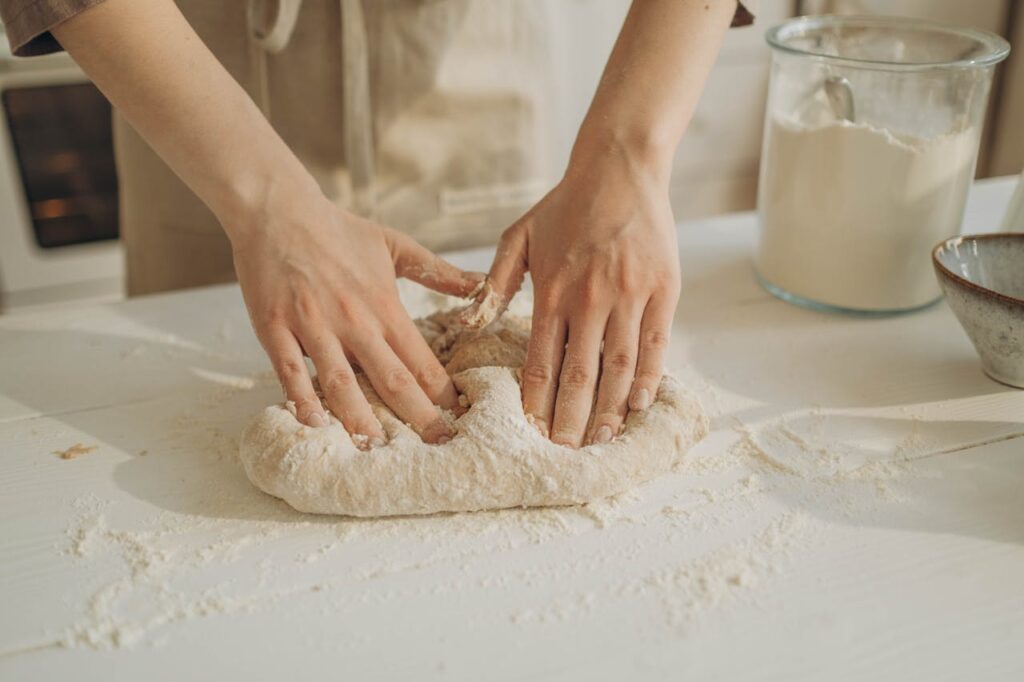
Myth: Your sourdough is ready if it floats when you put it in a bowl of water.
Truth: This one can be true, although it is far from reliable. What if the first spoonful of starter floats while the second spoonful sinks? Does this indicate that the starter is ready or not? The float test can be used, but always with discretion.
A better way is to gauge your starter’s activity level by placing it inside a see-through jar and measuring its growth is seeing the starter doubling in size within 4 to 5 hours of feeding when you feed it a 1:1:1 ratio i.e. equal amounts of active starter/flour/water. This is why using a see-through jar that you can tie a rubber band around or put some sort of marker on is a much more reliable method to judge your sourdough starter’s readiness. You can also let your starter grow by 2.5x or 3x in size although it may be starting to lose some of its momentum by then.
Myth # 3
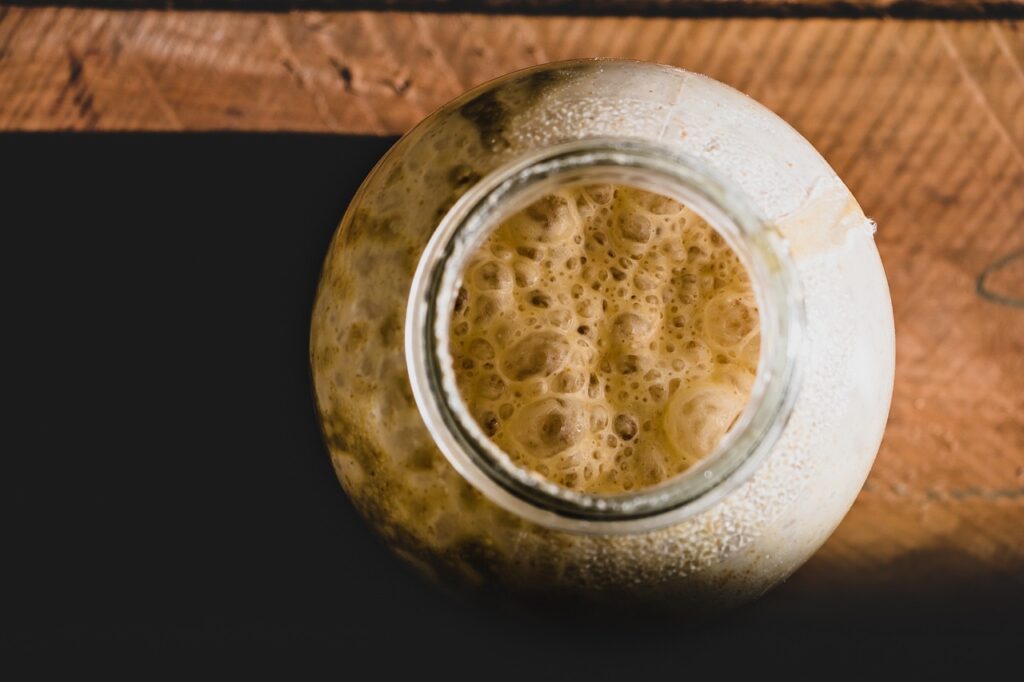
Myth: A sourdough starter that you bought elsewhere will keep the same flavor profile forever if you feed it the same flour that it has been relying on.
Truth: Perhaps you have seen many websites selling sourdough starter, and there is absolutely nothing wrong with buying one if you so wish. In fact, it’s a quick way to save yourself the time from having to start one.
Just don’t believe the fact that a sourdough starter that came from thousands of (or even a few) miles away will have the same flavor profile after it has adjusted to its new home. Sourdough starters are living organisms, and like any organisms they constantly change and evolve based on the current surroundings.
The good news: sourdough starters, if consistently fed the same or similar flour as they were originally fed, have a better chance of maintaining their unique characteristics.
Myth # 4

Myth: Bread made with sourdough starter will always be sour.
Truth: Bread made with sourdough starter can always be sour. What determines the sourness of the final loaf is dependent on a number of factors including the type of starter you use (i.e. stiff, regular, or liquid), whether you keep your starter inside the fridge or at room temperature, and how often your sourdough starter is fed. The organisms that live inside the starter is another factor that can influence a sourdough starter’s ‘tanginess’ level.
Myth # 5
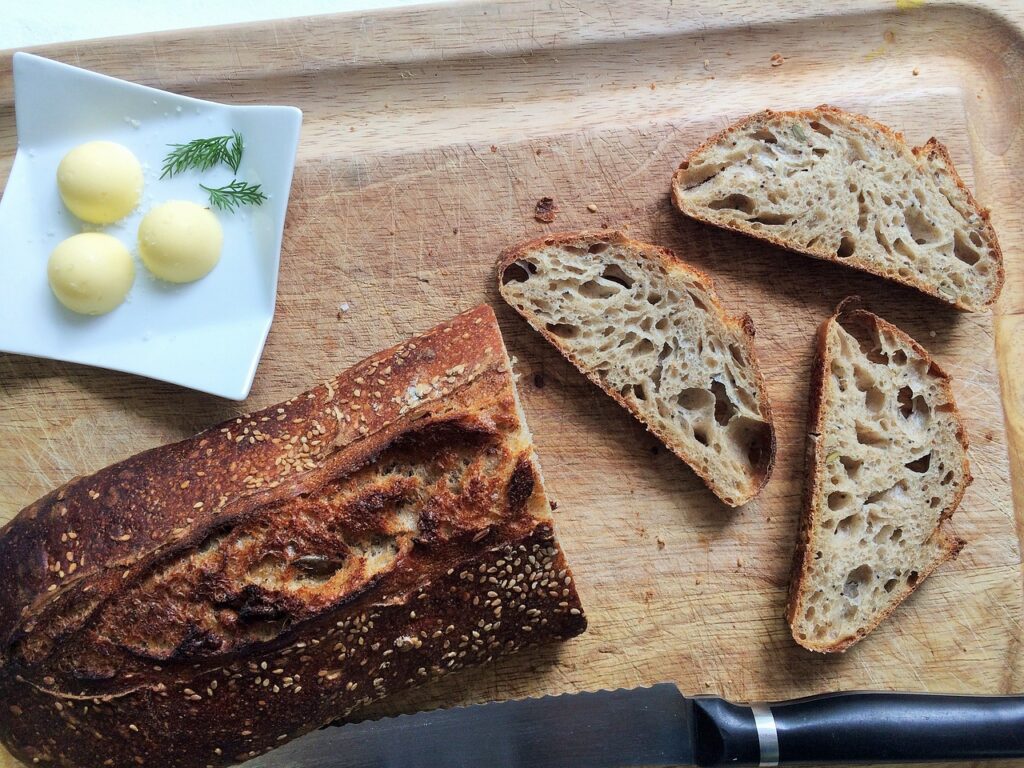
Myth: Big, holey crumbs are the be all and end-all of sourdough bread.
Truth: Many people do indeed aim for big, holey crumbs, but it does not mean that those not fitting this description isn’t good. Ultimately, it is an individual’s choice to go with those super-holey crumbs or a sourdough bread that is a little more compact. Just be aware that it will be more difficult to spread butter or other spreads on breads with more holey crumbs.
Myth # 6
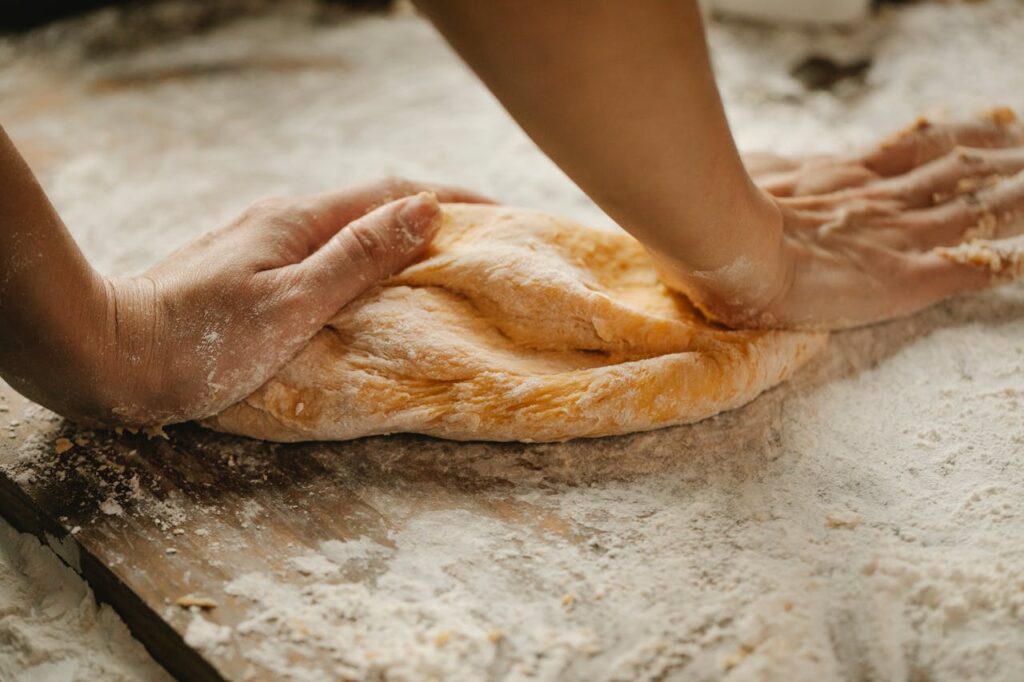
Myth: You need to knead your sourdough ‘dough’.
Truth: You can knead the dough if you prefer to lessen the time before letting it proof at room temperature or inside the refrigerator. No knead sourdough is always an alternative if you have a few hours to spare where you do a stretch and fold of the dough once every hour for between four to five hours. The texture of the final loaf between the knead and no-knead method will differ slightly, so pick whichever method that suits you best at any given moment.
Myth # 7

Myth: You will bake a great sourdough bread on your first try.
Truth: You may bake a great sourdough bread on your first try. Most of us who are just starting out, however, will likely need multiple attempts before we achieve a loaf that we are satisfied with. The key is to keep on experimenting by taking notes every time that you bake so that you can make the required changes to become a better baker.
Myth # 8
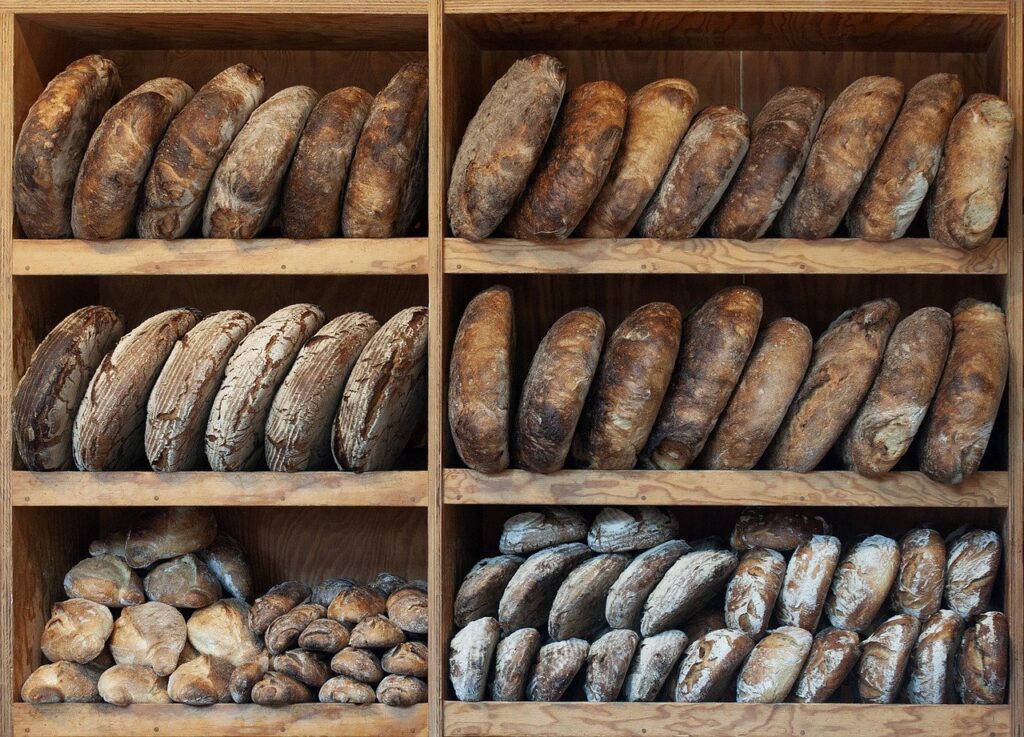
Myth: Your sourdough bread will last for days.
Truth: This is more of a fact that is less mentioned than a myth, but your sourdough bread will only be good for around one day after being baked. The soft, crunchy crust that comes out of the oven will start to harden, and so will the bread itself. Our advice: finish your sourdough bread as soon as you can. Alternatively, adding some oil to your sourdough can make the crust a little softer than it would be otherwise.
Otherwise, consider putting your loaf of bread inside the refrigerator to extend its life.
Myth # 9

Myth: You need a lot of sourdough starter to make a loaf of sourdough bread.
Truth: A typical sourdough bread will need around 100 to 150g of starter, or approximately 20% of the flour’s amount (in baker’s percentage). What this means is that you can feed your sourdough starter only a minimal amount of flour and water each day to keep it active. Alternatively, you can feed your starter once or twice a week if you plan on storing it inside the refrigerator (approximately 10 to 15g of flour and water each feeding). Of course, this will change depending on how often you bake.
Myth #10

Myth: You need proofing baskets to store your sourdough for the proofing stage.
Truth: Proofing baskets are indeed a useful tool to for your dough during the proofing stage, but they can be costly if you are trying to save yourself some money. The alternative would be to use suitably-sized containers such as a Pyrex bowl as a substitute as long as it provides sufficient space to hold the dough in place while also allowing room for it to rise during the proofing stage.
Now Let’s Bake Some Sourdough Bread
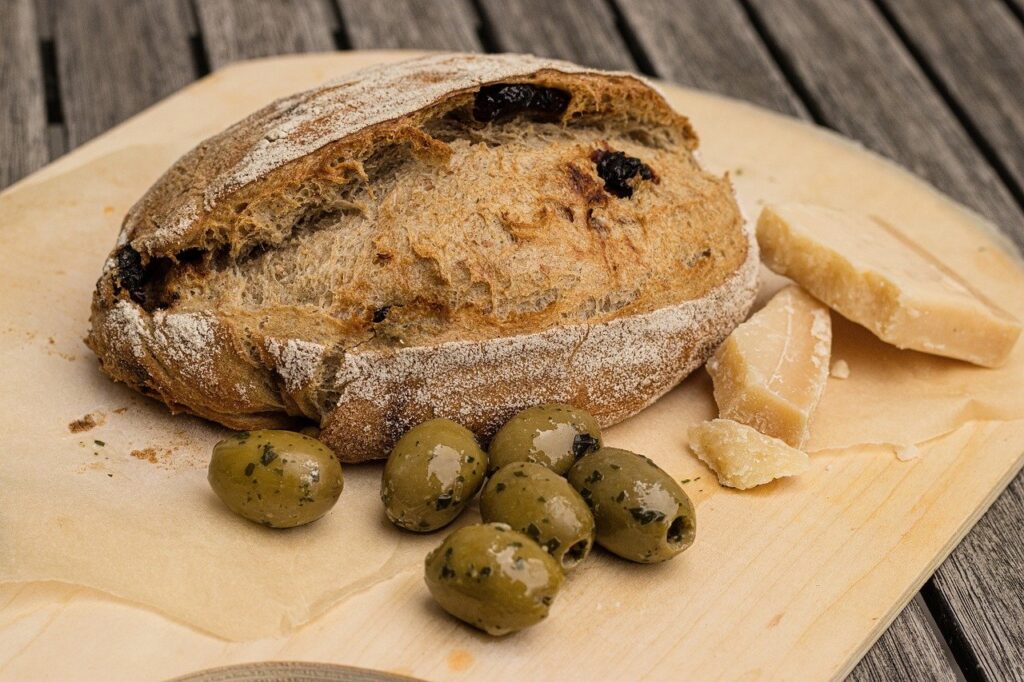
We hope that you have found the above information useful in your bread baking journey. May many loaves of delicious sourdough bread come out of your oven!

